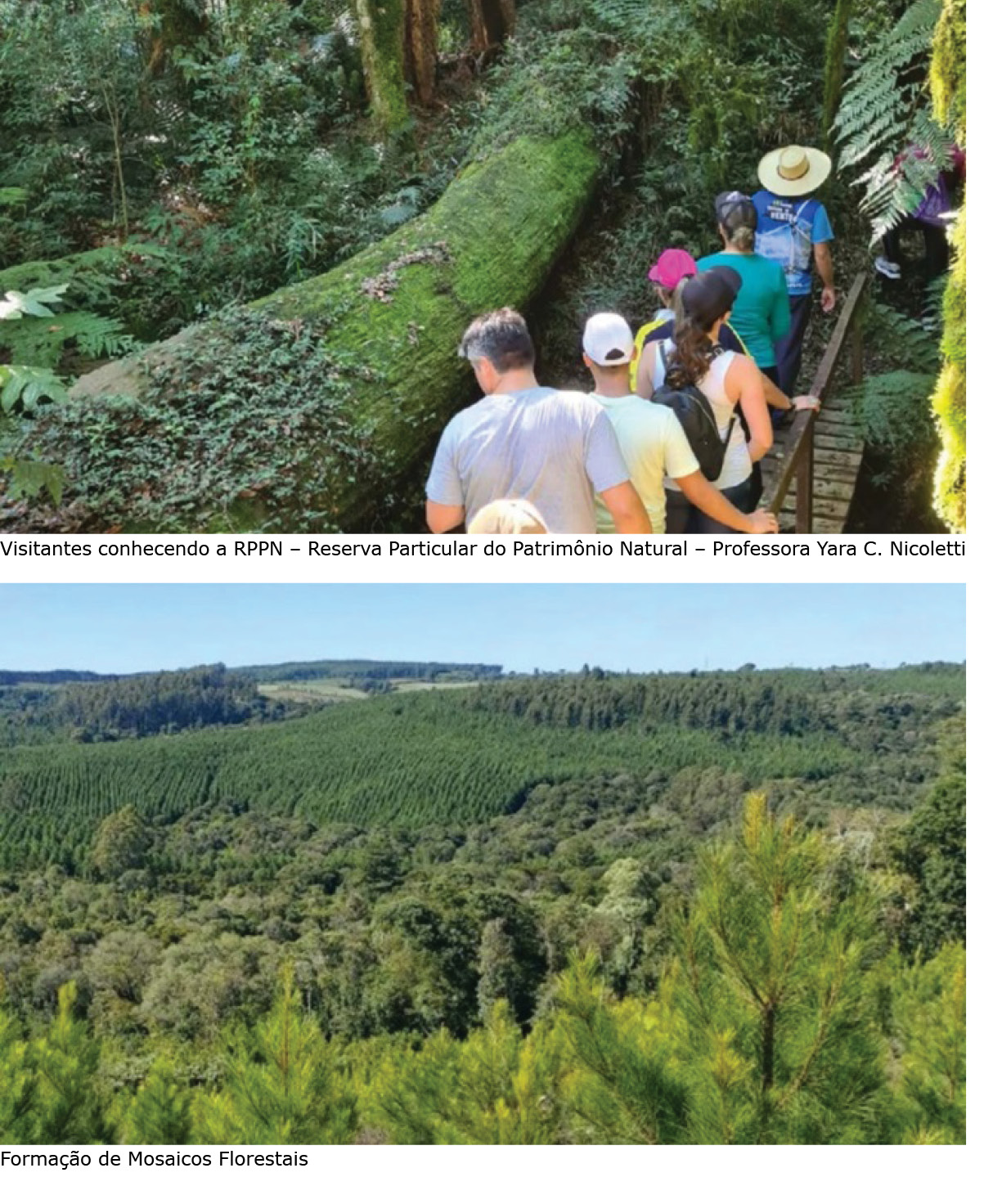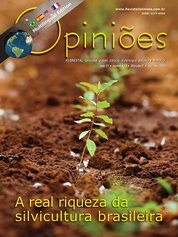Juliano Souza
Irani Forest Planning Coordinator
OpCP74
The forest conservation and restoration program in Irani
The moment requires a lot of reflection on the importance of this topic, amid an avalanche of news linked to climate change and the main factors that affect our environment. Increasingly, we understand that the subject must be part of our essence, being in synergy with processes and in balance with our management models.
According to the Brazilian Tree Industry (2022), our forestry sector plants, harvests and replants in an area of 9.94 million hectares, managed using the most modern techniques and widely supported by science and technology. In addition to productive areas, our sector also simultaneously conserves another 6.7 million hectares of native forests, 71% of which are Legal Reserve areas and the remaining 29% are Permanent Preservation Areas.
 Robust numbers that demonstrate the importance of the forestry sector in the Brazilian economy and in many other countries that absorb our range of products, ranging from nanocellulose crystals used in electrical conductors to thickeners and stabilizers used in the composition of various foods.
Robust numbers that demonstrate the importance of the forestry sector in the Brazilian economy and in many other countries that absorb our range of products, ranging from nanocellulose crystals used in electrical conductors to thickeners and stabilizers used in the composition of various foods.
Fundamental to the maintenance and conservation of the environment, our forestry sector is also responsible for the direct or indirect management of 100 thousand hectares of Private Natural Heritage Reserves, distributed in different Biomes, as well as being responsible for more than 180 thousand hectares of areas identified as having high conservation value.
The sector also focuses on the ecophysiological capacity of trees to remove and store carbon dioxide from the atmosphere in the formation of their biomass. There are 1.82 billion tons of carbon dioxide stored in productive forests and 2.98 billion tons in natural forests.
As for diversity, more than 8,300 species of our biodiversity were recorded in areas belonging to our forestry sector, representing 35% fauna and 65% flora. There are several topics with which the forestry sector contributes significantly to the improvement of our environment, sometimes criticized for the lack of information by some audiences, however, “not shaken”, and with the certainty that it is on the right path.
Inspired by the connection we have with nature, at Irani Papel e Embalagem we constantly seek to meet current needs without compromising those of future generations. For more than 80 years, we have embraced and packed life, carrying people's everyday items, driven by the certainty that, together, we develop our future!
Our conservation and restoration program forestry consists of a model committed to the environment and sustainable development, which are at the essence of our activities. By maintaining the FSC forest management certificate since 2008, we guarantee that our forestry operations follow premises based on several sustainable practices.
In the composition of our forests in Santa Catarina, 45% correspond to productive areas made up of pine plantations for paper production and eucalyptus for energy generation, 6% correspond to our infrastructure areas necessary for the production process and 49% correspond to areas of native forests monitored, conserved and constantly enriched. 25% of our total areas are made up of Legal Reserve areas and, in 2018, we created the Professora Yara C. Nicoletti Private Natural Heritage Reserve. The private conservation unit has an area of 285 hectares, dedicated to environmental education actions, allowing visitors to experience all aspects that the Araucaria forest can offer. It is an enriching experience that demonstrates the importance of Irani's sustainability actions.
The environmental education actions developed involve schools in the communities where we have employees and service providers with the aim of strengthening relationships and disseminating information about environmental preservation actions, in addition to strengthening the communication channel with our steakholders.
Based on the concepts and attributes of High Conservation Value, developed by the Forest Management Council, 3,150 hectares were identified with exceptional characteristics of biodiversity, landscape formation, rare and endangered ecosystems.
Inserted in the Atlantic Forest Biome and characterized as Mixed Ombrophylous Forest (Araucaria Forest), we monitor the biodiversity attributes of native forests. For flora surveys, studies began in 2009 and until 2022, and more than 120 species have already been identified, among them, 11 are on the list of endangered species.
In fauna surveys, studies began in 2008, among the species already identified in the areas of Irani, the tables show the species that are in categories at risk of extinction, based on population data, geographic distribution and threats defined by the International Union for Nature Conservation and the national and state list (Santa Catarina).
In addition to studies aimed at flora and fauna, research is also carried out aimed at identifying birds, with significant results and the presence of vulnerable and endangered species, such as: macuco, sparrowhawk, sabiácica, pavó, caboclinho-black-bellied, among others.
In the identification of amphibians, the results were similar, identifying species such as the red-bellied thrush and the glass frog, also present on the list of vulnerable and endangered species.
Among the initiatives for forest conservation and restoration in Irani, a nursery is also maintained for the production of native forest seedlings. The cultivation seeks to guarantee seedlings for use in internal projects to recover degraded areas in support of communities and schools, as well as support for restoration actions and environmental events promoted by the local community. Currently the nursery has around 40 species, in 2022, approximately 9 thousand native seedlings were donated.
To form the forest base, the areas are planted forming mosaics with the Permanent Preservation Areas and Legal Reserve, which guarantees the conservation of biodiversity through the formation of blocks and ecological corridors. This system facilitates the gene flow of flora and fauna between forest remnants.
Forestry operations seek to comply with best practices, previously planned by a multidisciplinary team, developing Operational Microplanning, in which various information related to health and safety, operational aspects, road network, productivity, influence on surrounding communities, as well as information relating to the environment and possible impacts caused by the options, in this case, identifying, controlling, minimizing and mitigating possible environmental impacts.
With the aim of promoting greater forest safety, in 2020, 2 towers were installed, which, through 24-hour monitoring, identify possible smoke sources. This system enabled greater agility in the response time of the company's brigades, thus reducing property losses and carbon dioxide emissions into the atmosphere.
Sustainability, for us, is a management model that balances economic, social and environmental development. The balance and synergy between these pillars produces lasting and admirable results. The commitment to sustainability is present throughout our business chain: it originates from forests and is complemented by activities in nearby communities, which promotes the search for a socially fair life.




